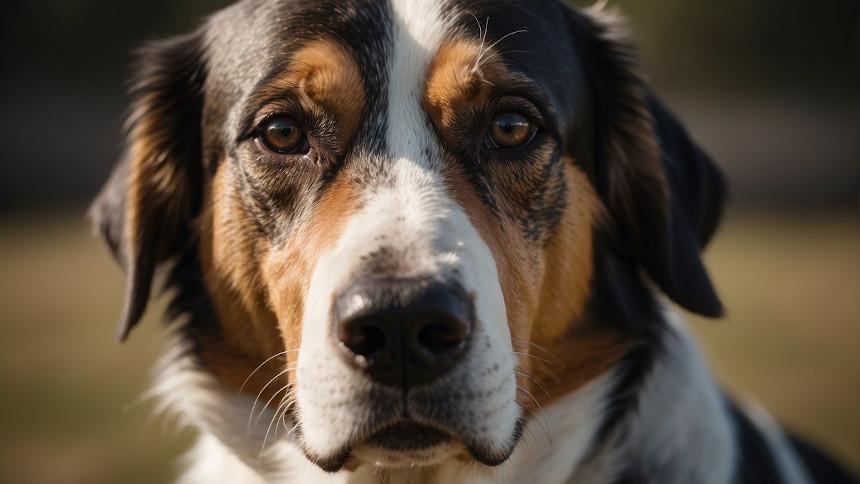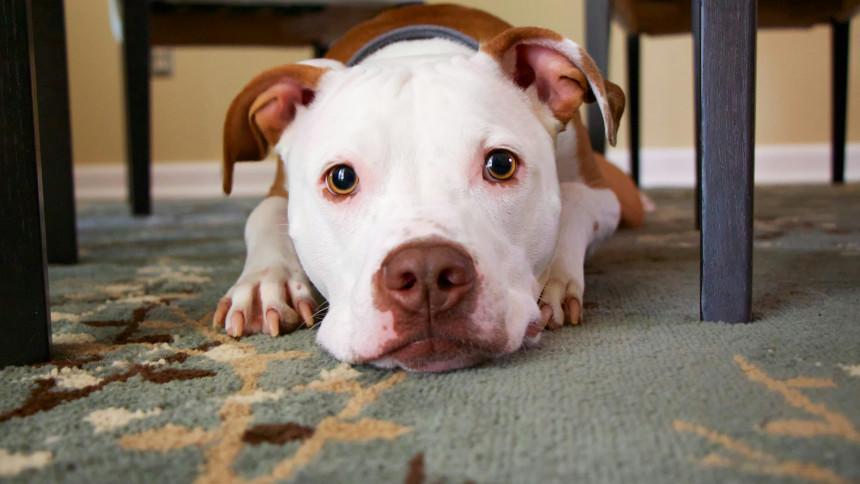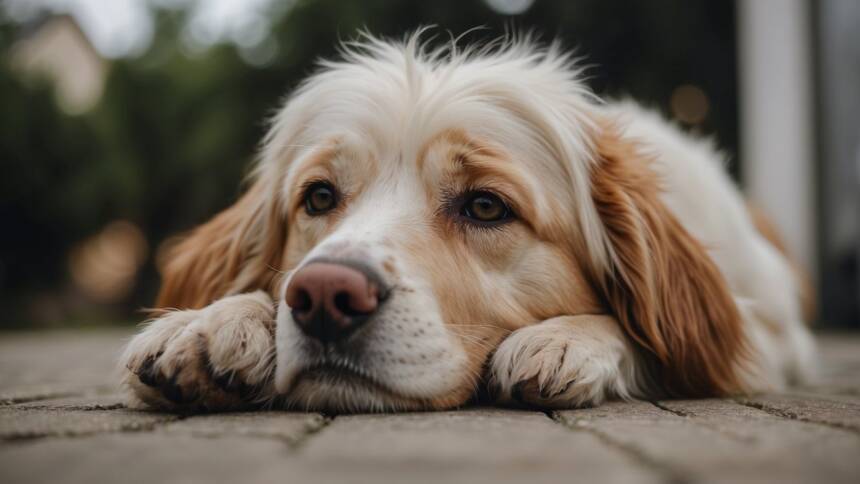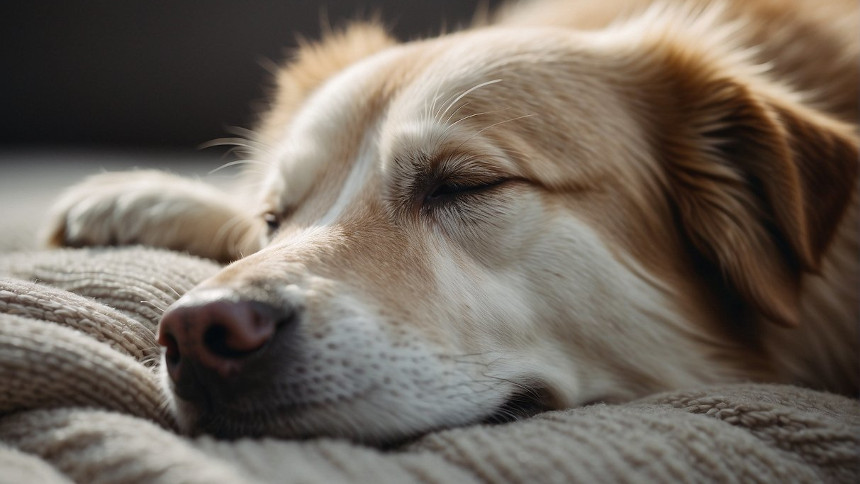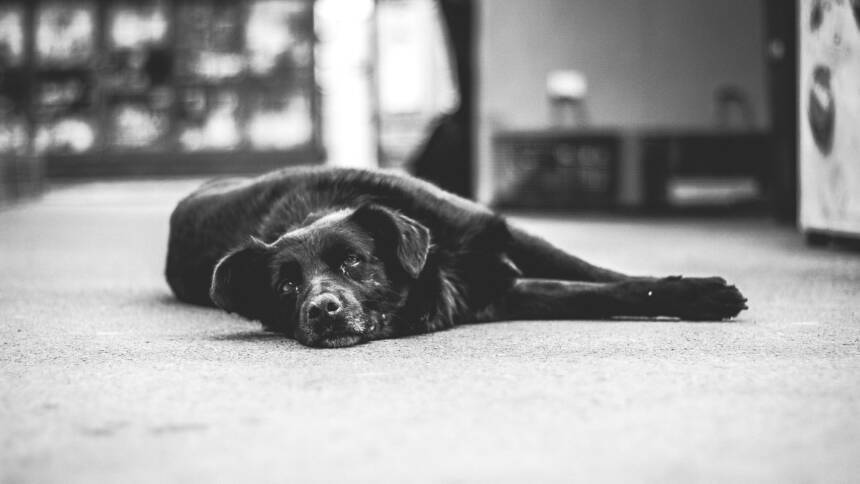When a dog starts missing patches of hair, it can be a clear sign that something isn’t right with their health or environment. Hair loss in dogs, also known as alopecia, can be caused by a variety of factors, including parasites, hormonal imbalances, fungal infections, allergies, or immune disorders. Each cause may exhibit additional symptoms, such as itchiness, red or inflamed skin, and changes in behavior or appetite, which can help in diagnosing the underlying issue.
Parasites like mites and fleas are common culprits behind hair loss in dogs. These pests can lead to patchy hair loss that is often accompanied by redness, inflammation, and itching. Skin infections, whether fungal like ringworm or bacterial, can also result in hair falling out in clumps. In these cases, affected areas may appear crusty or scaly, and the dog may show signs of discomfort.
Addressing hair loss in dogs involves identifying the root cause of the condition. It’s important for pet owners to observe their dog’s symptoms and seek veterinary guidance. Effective treatment plans may include medication for infections or parasites, changes in diet, or managing allergies. Maintaining regular grooming and keeping the dog’s environment clean can also help prevent issues related to hair loss.
Understanding Dog Hair Loss

Hair loss in dogs, medically known as alopecia, can be a sign of underlying health issues. It’s crucial to observe the patterns of hair loss and any accompanying symptoms to identify the possible cause.
Common Causes of Hair Loss
- Allergies: Can lead to itchy skin and subsequent hair loss.
- Hormonal Imbalances: Conditions like hypothyroidism or Cushing’s disease may cause hair thinning.
- Infections: Fungal, bacterial, or parasitic infections often result in hair loss.
- Stress: Psychological stress can disrupt the normal hair growth cycle.
- Nutritional Deficiencies: Poor diet may lead to coat deterioration and hair loss.
Symptoms and Identification
- Bald Spots: Patchy areas where hair has fallen out.
- Symmetrical Hair Loss: Hair loss that occurs evenly on both sides of the dog’s body.
- Thinning Coat: A general decrease in hair density.
- Seasonal Alopecia: Hair loss that occurs during specific seasons.
- Skin Changes: Redness, bumps, or rashes that accompany hair loss.
The Role of Genetics in Canine Alopecia
Certain breeds are predisposed to genetic forms of alopecia, where hair loss can be:
- Breed-Specific: Some breeds have hereditary conditions leading to hair loss.
- Symmetrical: Genetics can influence a pattern of symmetrical hair loss.
Medical Conditions Leading to Hair Loss
Several medical conditions can cause hair loss in dogs. Accurate diagnosis and understanding the underlying causes are essential for effective treatment. These ailments range from parasitic infestations to endocrine disorders, each with specific symptoms and treatment protocols.
Parasitic Infestations
Mites such as those causing sarcoptic mange (Scabies) or demodectic mange (Demodex) are common culprits of hair loss. Dogs with mange typically show symptoms of severe itching, redness, and hair loss that can lead to secondary bacterial infections. For demodectic mange:
- Demodex mite: Hair loss is often accompanied by crusty skin or scabs particularly around the face and paws. Diagnosis typically involves skin scrapings analyzed under a microscope.
Fleas and ticks can also trigger allergic dermatitis, resulting in hair loss due to intense scratching and biting. It’s important to:
- Regularly check the dog’s ears and body for fleas and ticks.
- Address prevailing allergens with appropriate medication.
Fungal and Bacterial Infections
Ringworm, a common fungal infection, and bacterial infections like folliculitis, often present with circular patches of hair loss, scaling, and sometimes inflamed lesions. For fungal and yeast infections:
- Diagnosis: A veterinarian might use a Wood’s lamp or fungal culture.
- Treatment: Often includes antifungal shampoos or oral medications.
A dog with a bacterial infection may exhibit symptoms such as itching, inflammation, and crusty patches of skin. These infections are usually secondary to other conditions like allergies or wounds.
Endocrine Disorders
Hormonal imbalances can lead to hair loss in dogs. Two common endocrine conditions associated with alopecia are:
- Hypothyroidism: Characterized by weight gain, lethargy, and sometimes changes in coat texture.
- Causes includes inadequate production of thyroid hormones.
- Cushing’s disease: Typically marked by symptoms such as increased thirst and urination, and hair loss that’s symmetric on the body.
- Diagnosis may involve blood tests to check cortisol levels.
Both conditions require veterinary intervention for hormone management and to halt hair loss progression. It’s vital for pet owners to seek medical advice if they notice unusual hair loss patterns in their dogs.
Diagnosing Hair Loss in Dogs
Accurate diagnosis of hair loss in dogs typically involves a comprehensive veterinary examination, specific lab tests including skin sampling, and advanced diagnostic procedures such as imaging and biopsy. These methods pinpoint the underlying causes of hair loss, ranging from bacterial infections to allergies.
Veterinary Examination
A veterinarian will conduct a thorough examination to assess the pattern and extent of hair loss. They will look for signs of itchiness, irritation, inflammation, and red skin. The presence of sores or skin infections is indicative of underlying issues that may be contributing to the hair loss.
Lab Tests and Skin Sampling
Lab tests are crucial for a definitive diagnosis. The veterinarian may collect:
- Skin scrapings: To check for parasites, fungi, or bacteria.
- Hair follicle evaluation: To establish reasons for hair loss at the root.
- Allergy testing: To determine if environmental or food allergens are the cause.
Imaging and Biopsy Procedures
- Imaging: Techniques like ultrasound or X-rays to rule out systemic causes.
- Biopsy: A small sample of skin may be surgically removed and examined for diseases such as cancer or deep bacterial infection that could lead to hair loss.
Each step is essential in veterinary medicine to accurately diagnose and subsequently treat the cause of hair loss in dogs.
Treating Canine Hair Loss
Effective treatment of canine hair loss requires an accurate diagnosis of the underlying cause. Veterinary intervention is crucial, and it may involve medications, changes in diet and lifestyle, or more advanced treatments depending on the severity and nature of the condition.
Medications and Topical Treatments
Prescribed medications play a pivotal role in addressing the underlying cause of hair loss in dogs. Medications often include:
- Antibiotics: To combat bacterial infections that might cause hair loss.
- Antifungals: For treating yeast or ringworm infections associated with hair loss.
- Anti-inflammatories: Essential in reducing skin inflammation and itchiness.
Topical treatments such as medicated shampoos or creams may be recommended to relieve symptoms and promote healing of the affected skin.
Diet and Lifestyle Modifications
A well-balanced diet is essential for maintaining healthy skin and coat. Omega fatty acids and antioxidants can support skin health, which might be included in the dog’s diet through supplements or specialized foods. Proper grooming and flea control are also beneficial to minimize skin irritation and prevent further hair loss.
Surgical and Advanced Interventions
In severe cases, or when hair loss is due to genetic conditions, surgery may be necessary. Advanced techniques in veterinary medicine, such as stem cell therapy or laser treatment, have shown promise in treating some forms of alopecia although these methods are less common and usually employed as a last resort when other remedies have proven ineffective.
Preventative Measures and Home Care

Preventing and managing hair loss in dogs involves proactive monitoring, as well as addressing environmental and dietary factors. It is crucial for dog owners to establish routines that mitigate risks associated with hair loss.
Regular Monitoring and Care
Dog owners should regularly inspect their pet’s coat and skin for any signs of hair loss, skin disorders, or lesions. Using a monitoring system, such as a smart collar, can help identify changes in the dog’s condition quickly. The presence of excessive shedding, dandruff, hot spots, or a foul odor can indicate underlying issues, prompting further investigation. Care should include:
- Daily brushing: This helps to not only reduce shedding but also to identify any onset of fleas, lice, or other external parasites.
- Regular baths: Use mild shampoo to avoid skin irritation and to help alleviate conditions like flea allergies, dandruff, and pressure sores through reduced friction.
- Skin checks: Look for any unusual spots, such as those caused by insect bites, acral lick dermatitis, or hot spots.
Environmental and Dietary Adjustments
The environment a dog is exposed to daily and its diet play pivotal roles in skin and coat health. Dog owners should consider:
- Food: Offer a balanced diet with essential fatty acids to support skin health. Avoid foods that the dog may be allergic to, as food allergies can lead to skin issues and hair loss.
- Clean environment: Maintain a clean living area to reduce the risk of skin infections. Minimize the dog’s exposure to potential allergens like dust or pollen that may contribute to seasonal flank alopecia.
- Appropriate bedding: To prevent pressure sores, provide soft yet supportive bedding that reduces friction and pressure on the dog’s skin.
Implementing these preventive measures can significantly contribute to a dog’s overall well-being and may reduce the likelihood of hair loss due to environmental factors or skin conditions.
